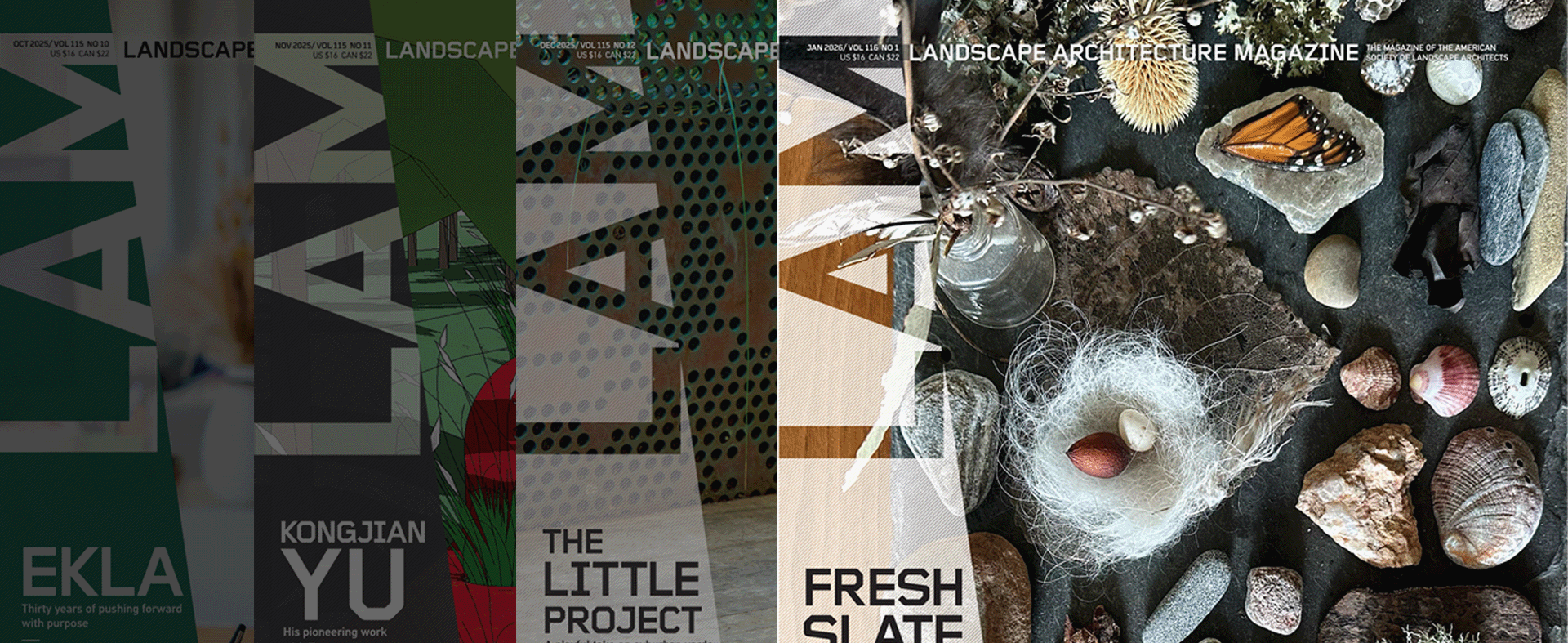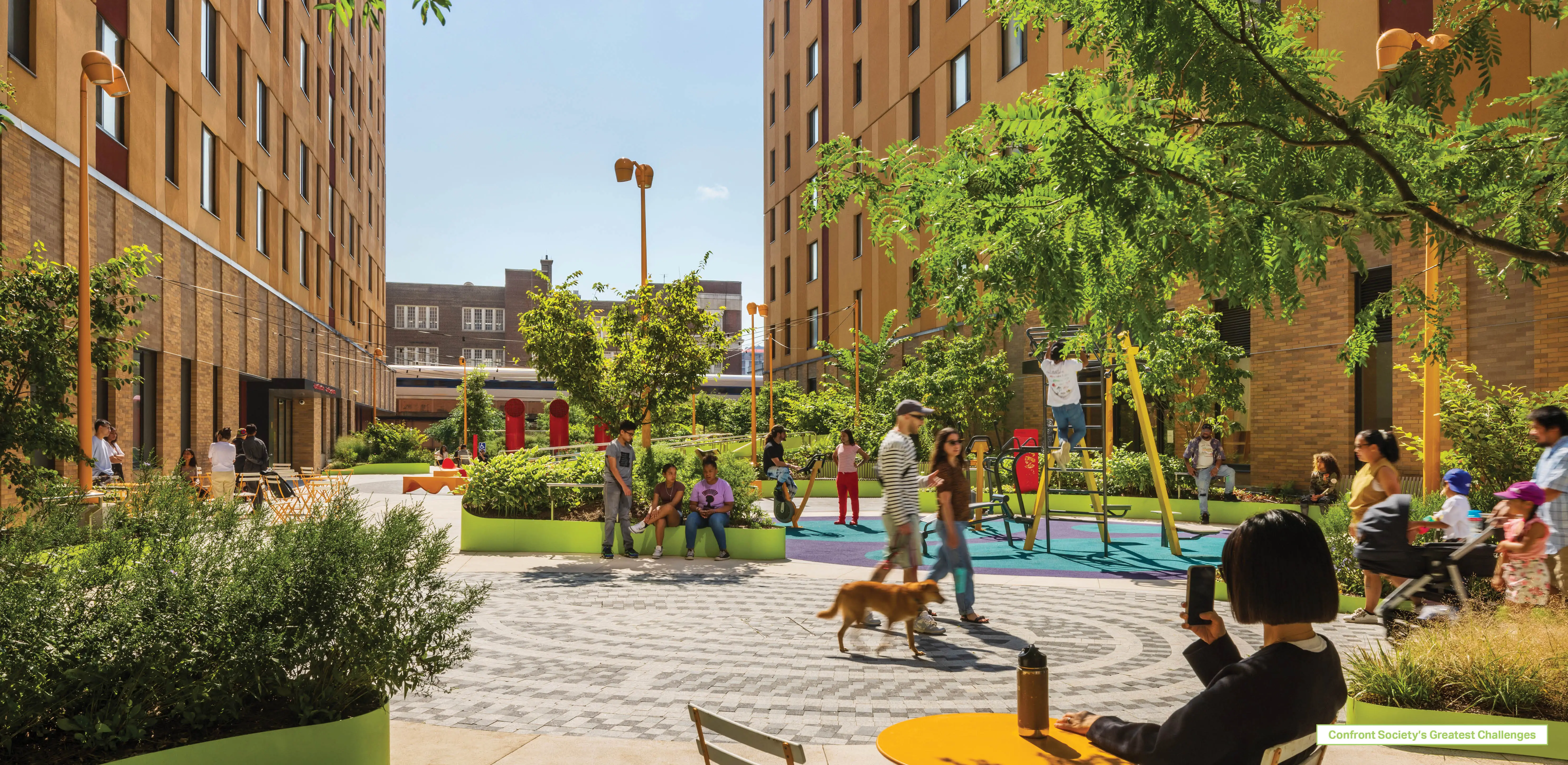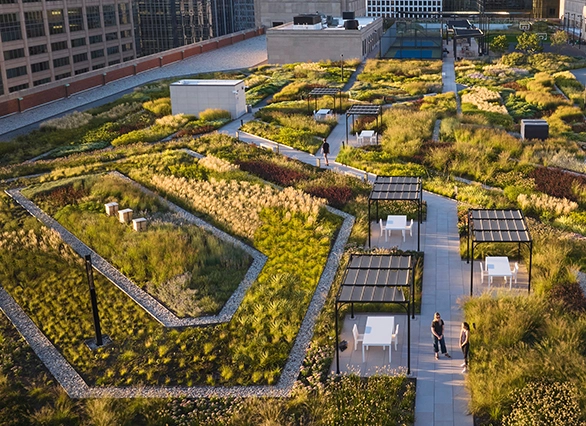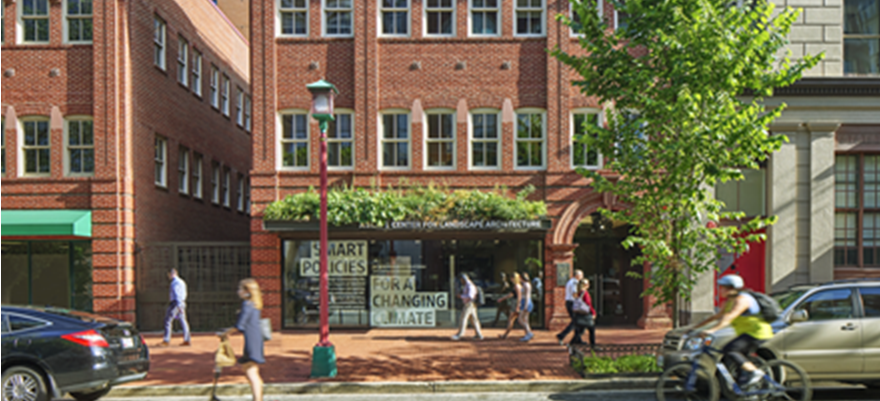2021 Market Demand for Climate Solutions
Have you seen an increase in demand from clients for climate solutions over the past year?
Yes, a 100% increase - 12%
Yes, a 50% increase - 26%
Yes, a 25% increase - 23%
Yes, a 10% increase - 16%
No increase - 20%
What climate impacts are clients most concerned about?
Increased duration and intensity of heat waves - 47%
Increased intensity of storms - 44%
Increased spread and intensity of inland flooding - 40%
Loss of pollinators, such as bees and bats - 36%
Changing / unreliable weather – “Weird weather” - 32%
Increased invasive plant intrusions due to stress on ecosystems from climate change - 31%
Increased spread and intensity of coastal flooding - 28%
Sea level rise - 27%
Increased spread and intensity of wildfires - 27%
Increased spread and intensity of groundwater flooding - 26%
Major species loss or extinction in ecosystems - 21%
Decreased water quality due to increased flooding - 20%
Increased frost-free season / longer summers - 18%
Increased intensity of hurricanes - 17%
Migration of people - 14%
Migration of animal and insect species - 11%
Changing disease vectors, such as new spread of mosquito-borne diseases - 10%
Increased landslides or mudslides - 9%
Expanded allergy seasons - 9%
Increased intensity of allergies - 7%
Who is driving demand for climate projects the most?
City / local government - 65%
Non-profit organizations - 36%
State government - 36%
Community groups - 30%
Federal government - 28%
Commercial developers - 11%
Homeowners - 22%
Educational Institutions - 20%
Architects - 10%
Commercial property owners - 7%
Are clients requesting projects to reduce or store greenhouse gas emissions?
Yes, all clients - 6%
A majority of clients - 10%
Around half of clients - 11%
Few clients - 35%
No clients - 39%
Are clients requesting plans and designs in order to increase resilience to existing or projected climate impacts?
Yes, all clients - 9%
Yes, a majority of clients - 23%
About half of clients - 16%
A few clients - 34%
No clients - 17%
How actively are you recommending clients integrate climate strategies into projects?
Recommending this to all clients - 40%
Recommending to most clients - 25%
Recommending to clients who express interest / concern - 19%
Recommending to a few clients - 9%
Not recommending to clients - 8%
Specific Planning and Design Solutions In Demand for Various Climate Impacts
What community-scale climate work is being requested by clients?
Stormwater management - 67%
Walkability improvements - 52%
Trails - 49%
Bike infrastructure - 46%
Complete Streets - 41%
Transit-oriented development - 26%
Electric vehicle infrastructure - 25%
Smart Growth plans - 23%
Safe Routes to Schools - 22%
Climate planning updates in comprehensive plans - 20%
Wildfire mitigation planning - 15%
Climate justice assessments - 14%
Other (please specify) - 12%
None of the above - 8%
What strategies are clients requesting to reduce or store greenhouse gases?
Parks and open space - 53%
Tree and shrub placement to reduce building energy use - 49%
Habitat creation / restoration - 48%
Elimination of high-maintenance lawns - 42%
Minimizing soil disturbance - 24%
Carbon-neutral landscape planning and design - 22%
Carbon-positive / Climate-positive landscape planning and design - 21%
Elimination of fossil fuel-or chemical-based fertilizers - 20%
Low-carbon materials research / specification - 19%
Afforestation - 17%
Elimination of maintenance equipment powered by fossil fuels - 17%
None of the above -14%
Natural carbon sink analysis - 9%
Other (please specify) - 6%
What low-carbon or carbon-sequestering materials are clients requesting? (Select all that apply)
Recycled materials - 47%
Reused materials - 38%
Trees that absorb higher amounts of carbon than others - 34%
Carbon-sequestering shrubs, groundcover, and grasses - 29%
Solar reflective materials - 26%
None of the above - 25%
Carbon-sequestering soil amendments - 15%
Carbon-sequestering cement / concrete - 14%
Carbon-sequestering wood materials - 10%
Other (please specify) - 4%
What climate adaptation / resilience work are clients requesting?
Planning and designing for near-term climate adaptation / resilience impacts (2-5 years) - 43%
Planning or designing for immediate climate risks or impacts - 39%
Planning and designing for medium-term climate adaptation / resilience impacts (5-10 years) - 38%
Planning and designing for long-term climate adaptation / resilience impacts (10-50 years) - 32%
Reassessment of risk maps / projections related to wildfire, flooding, heat, or other climate impacts - 23%
None of the above - 15%
Other (please specify) - 3%
What strategies are clients requesting in response to wildfires?
None of the above - 47%
Firewise landscape design strategies - 27%
Defensible spaces - 22%
Land-use planning and design changes - 19%
Forest management practices - 17%
Wildfire risk or impact assessment - 14%
Comprehensive plan update for wildfire risk reduction - 13%
Controlled burns - 13%
Other (please specify) - 4%
What strategies are clients requesting in response to sea level rise?
None of the above - 40%
Nature-based solutions - 33%
Erosion management - 30%
Beach / dune restoration - 25%
Other coastal ecosystem restoration - 21%
Berms - 19%
Sea walls - 17%
Breakwaters - 12%
Cisterns - 12%
Relocation analysis / planning - 11%
Mangrove restoration - 10%
Flood gates - 8%
Other (please specify) - 6%
What strategies are clients requesting to address flooding?
Bioswales - 62%
Rain Gardens - 61%
Permeable pavers - 59%
Trees - 54%
Wetland restoration - 47%
Stormwater-managing open spaces - 45%
Constructed ponds or lakes (retention basins) - 40%
Stormwater-managing parks - 35%
Green roofs - 35%
Meadows - 29%
Rain barrels - 23%
Cisterns - 21%
Elevating homes and properties - 21%
New flood maps - 16%
None of the above - 7%
Other (please specify) - 6%
What strategies are clients requesting to address drought?
Native, drought-tolerant plants - 67%
Low-water, drought-tolerant plants - 65%
Irrigation systems - 48%
Greywater reuse - 36%
Landscape solutions that increase groundwater recharge - 35%
Landscape solutions to manage flash flooding - 23%
Rain barrels - 21%
Constructed ponds or lakes (detention basins) - 19%
Reduced numbers of plants in general - 17%
Rock gardens - 17%
Cisterns - 12%
None of the above - 12%
Drought risk or impact assessment - 11%
Comprehensive plan update for revised drought impacts - 11%
Blackwater reuse - 9%
Other (please specify) - 4%
What strategies are clients requesting to address extreme heat?
Street trees - 64%
Shade structures / canopies - 60%
Tree groves - 35%
Parks - 35%
Green roofs - 31%
Water play features - 26%
Forests - 24%
Low-albedo / reflective materials - 24%
Water fountains - 18%
Pools - 18%
Misters - 14%
None of the above - 12%
Comprehensive plan update for extreme heat mitigation - 11%
Extreme heat risk or impact assessment - 7%
Wind pathways - 6%
Cooling Centers - 6%
Other (please specify) - 3%
What strategies are clients requesting to address biodiversity loss and ecosystem degradation accelerated by climate change?
Increase diversity of native tree and plant species - 58%
Native plant gardens - 57%
Increase use of plant species pollinators rely on - 52%
Ecological landscape design - 41%
Ecological restoration - 35%
Water quality improvements - 29%
Wildlife corridors - 28%
Pollinator pathways - 27%
Soil restoration - 24%
New conservation areas - 19%
Comprehensive plan update for ecosystem restoration and biodiversity - 17%
Ecosystem health assessments - 13%
None of the above - 12%
Other (please specify) - 3%
Estimated Economic Value of Climate Projects
Overall, how would you characterize the construction value of your climate projects in the past year?
Over $1 billion - 6%
$500 million - $1 billion - 2%
$100 - $500 million - 4%
$50 - $100 million - 6%
$25 - $50 million - 5%
$10 - $25 million - 6%
$5 - $10 million - 7%
$1 - 5 million - 11%
Below $1 million - 28%
None of the above - 13%
Other (please specify) - 11%
How many local planning, design, construction, management, or maintenance jobs would you estimate have been created by your climate projects in the past year?
More than 500 jobs - 7%
More than 100 jobs - 6%
50 - 100 jobs - 8%
25 - 50 jobs - 8%
10 - 25 jobs - 16%
Less than 10 jobs - 29%
None of the above - 14%
Other (please specify) - 10%
Answering open-ended question about what trends they see in climate work, landscape architects, designers, and educators responded:
There is greater interest in climate change:
“People are actually interested now.”
“Climate resilience is becoming the narrative for each project.”
“Communities are starting to ask for climate action plans but getting them to implement these plans is another question.”
Climate changes witnessed:
“We have had such unusually large rainstorms that have resulted in extensive damage in Omaha, Nebraska. Clients are starting to put the pieces together and realize that planning for too much water, heat, cold, high winds is as important as planning for drought, moderate temperatures, and breezes.”
“Rain events are noticeably more intense. Four inches of rain or more are more frequent, so we are having to make a greater effort to manage it.”
“Earlier 100-degree temperatures, longer droughts, and colder winters.”
“Since 2019, we have noticed water levels in the Great Lakes significantly increase. In 2019, water in the Detroit River went over the 100-year flood level and was the highest level on record. It has gone down a bit since then but is still above normal high-water levels. Significant damage due to erosion has occurred all along the Great Lakes coastline, and frequent flooding has been occurring around Michigan due to heavy rain events.”
The need to adapt:
“There is a definite need to adapt plants to survive in a warmer client. Several evergreen species, mostly fir trees, no longer have cold enough winters in our area to survive. We're also seeing a greater need for stormwater management solutions due to the increasingly volatile storms.”
“We are encouraging our clients all over the world to install heat-tolerant trees.”
“In Hawaii, climate change impacts every project with very real and observable effects. Climate change is now a part of nearly every project in some aspect, with coastline and drainage area projects being the focus in terms of climate resilience.”
A new focus on climate solutions:
“Climate issues are becoming a key part of the planning and design process for projects at all scales in a way they never were before. Clients are more aware of these issues because of direct local impacts, news reports, or government policies. We're learning to ask the questions as our own awareness of climate increases. The increased availability of data about climate change and its impacts makes it easier to make it part of our mapping and analysis process at all levels. Since a lot of our work is publicly funded, state and federal policies and funding rubrics work their way down to the local level and then appear as part of local RFPs.”
“Our climate work is throughout the U.S. Almost all of our work includes climate adaptation, climate resilience planning, nature-based features design, climate justice, and more. Trends include climate resilience planning and design that encompasses climate justice issues, circular economy models, adaptive management.”
“We are moving towards flood resilience and making multimodal transit more accommodating.”
“For all projects near waterways, particularly coastal projects, initial steps are being taken to building water management related to climate change into the project. As a result, management of the project team has taken an entirely new perspective resulting in fee structures and project dialogue.”
“Increase demand for the incorporation of green infrastructure (rain gardens, permeable pavement, green roofs) into projects. Increase demand for native plant species. Demand for tree plantings and increased tree canopy to reduce the urban heat island.”
“Greater attention to stormwater management and design for greater and more intense rainfall, with a preference for distributed green infrastructure solutions. Minimizing use of fossil fuel and petroleum products. More accommodations for active transportation. Growing interest in carbon sequestration and carbon offsets.”
“Better transit service and facilities to reduce auto usage and encourage more focused development, integrated urban stormwater treatment / green infrastructure.”
About the survey
563 member landscape architects, designers, and educators responded to the survey in the month of October 2021. ASLA has 14,763 members as of October 23, 2021.
ASLA followed the organization of regions at the U.S. National Climate Assessment. All regions are accounted for in the data, with number of respondents by regions:
U.S. Southwest (CA, NV, UT, CO, AZ, NM) - 163
U.S. Northeast (CT, NY, NJ, VT, ME, MA, NH, PA, RI, WV, DE, VA, MD, DC) - 129
U.S. Southeast (AL, FL, LA, AR, MS, GA, NC, SC, TN, VA, KY) - 93
U.S. Midwest (OH, MI, IN, WI, IL, MN, MO, IA) - 77
U.S. Northwest (OR, WA, ID) - 44
U.S. Southern Great Plains (TX, OK, KS) - 35
U.S. Northern Great Plains (NE, WY, MT, ND, SD) - 11
Alaska - 5
Hawai’i and U.S. Affiliated Pacific Islands - 5
Respondents are located in all U.S. states and territories. Top 10 location of respondents:
California - 122
New York - 35
Texas - 32
Maryland - 29
Florida - 24
Washington - 23
North Carolina - 22
Michigan - 21
Arizona - 17
Colorado - 18

.webp?language=en-US)




